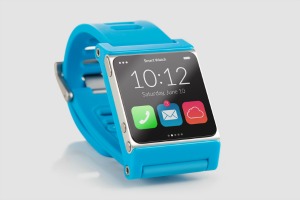 Wearable devices represent technology that humans can wear on-the-go. According to market intelligence, these devices will ultimately replace most of today's traditional gadgets that are used on a daily basis. Just as today’s devices are wholly unrecognizable to someone from twenty years ago, wearable technology and other advances will make today's gadgets seem obsolete only in about ten years.
Wearable devices represent technology that humans can wear on-the-go. According to market intelligence, these devices will ultimately replace most of today's traditional gadgets that are used on a daily basis. Just as today’s devices are wholly unrecognizable to someone from twenty years ago, wearable technology and other advances will make today's gadgets seem obsolete only in about ten years.
Wearables are a pioneering approach to integrating smarter and more practical gadgets into daily life. Initially focused on communications, applications, content and commerce, wearables will ultimately be involved in many other aspects of life and transform the lifestyles we once knew. Routine tasks will be transformed as activities become more efficient, entertaining and controllable.
In 2013, Credit Suisse announced that the global wearables market is roughly 3 to 5 billion USD and will reach $50 billion by 2019. Mind Commerce has taken a more conservative approach from the device perspective, but a broader approach to the entire ecosystem in terms of new services delivery and entirely new business models. Mind Commerce's recent report, Wearable Wireless in Industry Verticals 2013-2018, evaluates how wearables are already beginning to permeate several key industry sectors. This expansion will continue until wearables impact all verticals as they become an integral part of work, play, and general lifestyle activities.
On a broader scale, the Mind Commerce report, Evolution of Augmented Reality, Wearable Wireless, and Body Area Networks, explores how the entire wireless ecosystem (actually, it goes beyond wireless to include advertising, commerce, and more) will evolve to a wearable-centric model. There are several technologies that are converging to make this happen, including:
- Wearable technology
- Body Area Networks (BAN)
- Electronic Skin/Tattoo
- Augmented Reality (AR)
- Peer-to-Peer (P2P) Communications
- Short Range Wireless
- Ambient Awareness
The wearable transformation will be both a huge opportunity and also a big threat to wireless carriers as business models evolve along with the new wearable-centric ecosystem.
In fact, wireless carriers are already faced with downward price pressure on bearer services (voice services and basic data service). This is driven by a variety of factors, including increasingly greater wireless capacity, which will become even more of a supply side factor with LTE. On the demand side, bearer services, particularly data, continues to grow at a healthy pace, but there are limits to growth in bearer service for consumer and even enterprise usage.
LTE is a blessing and a curse as it adds more capacity and new service potential, but will also ultimately drive down data prices as the simple law of economics dictates a new price to reach equilibrium as supply (i.e. greater data available) overtakes demand, which it most likely will. Surely, there will be increasingly more data consumed, but the perception of value (and, therefore, price) will drive users to always seek cheaper alternatives.
The associated reduction, in terms of unit margin profitability, translates into the need for wireless service providers to seek new business models and services to provide additional top-line revenue as well as improved profitability for those new models/services. The emerging wearable ecosystem will be a place where wireless service providers can look for these new growth opportunities.
Top mobile executives see wearable computing devices as the next big thing in the mobile industry. In a recent survey, 22% of the respondents said wearables would be the next big thing, while 17% chose the mobile wallet, and 19% chose "everything as a service" (ie: cloud-powered software and computing). While a small survey at this point (less than 60 executives were polled), it's worth considering as a sign of how quickly wearables have become a focus of business interest.
For more information on technology transformations, download MarketResearch.com's free white paper on cloud computing. Or, for insights into the Telecom industry, check out the Mind Commerce Knowledge Center.
Thanks for reading!
Editor’s Note:
The blog post is collaboratively written by members of the Mind Commerce staff.
About Mind Commerce Publishing
 The Mind Commerce® mission is to provide customized research, consulting, training, and writing services for the telecommunications and IT industry. Mind Commerce clients include manufacturers, developers, service providers, industry organizations, and government. Mind Commerce differentiates itself from its competition by meeting the unique needs of its clients through customized product development and service delivery.
The Mind Commerce® mission is to provide customized research, consulting, training, and writing services for the telecommunications and IT industry. Mind Commerce clients include manufacturers, developers, service providers, industry organizations, and government. Mind Commerce differentiates itself from its competition by meeting the unique needs of its clients through customized product development and service delivery.
Mind Commerce is also available on Profound.com...
Purchase individual report sections for a pro-rated price. Visit Profound.com to learn more.


